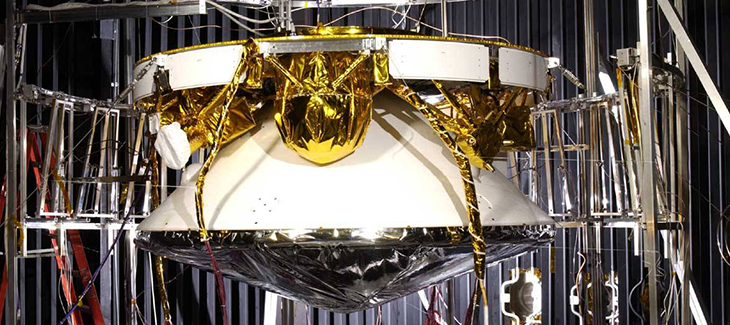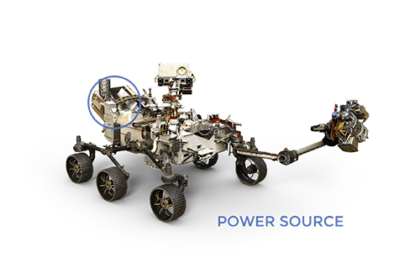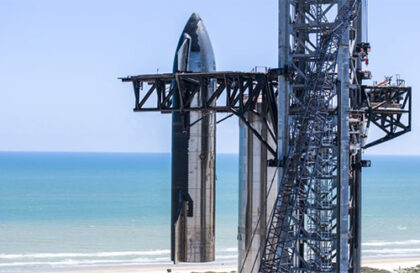On Mars, nighttime temperatures can reach minus 105°C (minus 157 degrees Fahrenheit). Harsh environment technologies make systems robust enough to withstand extreme space and Mars conditions.
Batteries and heaters
To protect against this cold, batteries and some components are stored in a special warm box. This is important because when power is supplied, the battery temperature should not drop below minus 20°C, and when recharging – below 0°C. The warm block receives heat from electric and eight radioisotope heaters and from the operation of electronics.
The radioisotope heater creates heat using 2.7 grams of plutonium dioxide, which is the size and shape of a pencil eraser. The plutonium dioxide is encased in a plutonium-rhodium alloy shell and surrounded by a carbon-graphite composite, giving it the shape of a C-cell battery. With multiple protective layers, this design is carefully tested to contain plutonium dioxide in extreme conditions safely. Such heaters have been used on other space missions, including the Sojourner rover.
Flying wings of the Mars Exploration Rover
Credit: NASA’s Jet Propulsion Laboratory for NASA’s Science Mission Directorate
Engineers have developed fabric ramps for the Spirit and Opportunity rovers to allow them to exit the lander onto the surface of Mars safely. This was necessary due to concerns that even slightly deflated airbags could create obstructions, increasing the height of the landing deck and risking damage to the rovers during landing.
The bat’s wings are made of Vectran coated with silicone. This material is very durable, even superior to Kevlar, and works effectively at low temperatures. Despite their weight of 6 kg, the wings are passive and deploy when the petals open, without the need for pyrotechnic devices.
Markings were placed on the bat’s wings, making it easier for rovers to analyze the condition of the tissue after deployment. This was key to determining whether it was safe for the rover to move.
Credit: NASA’s Jet Propulsion Laboratory for NASA’s Science Mission Directorate
Bat wings increased the number of paths for Mars rovers on the surface. This allowed the rovers to exit their landers at different angles. Although the landing of the Opportunity rover went smoothly, the Spirit rover encountered a problem when an airbag obstructed its path. As a result, Spirit was forced to change its route and exit one of the bat’s wings, turning 120 degrees.
Banner image: NASA’s Jet Propulsion Laboratory for NASA’s Science Mission Dir
Image credit:
https://mars.nasa.gov






